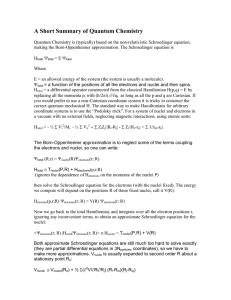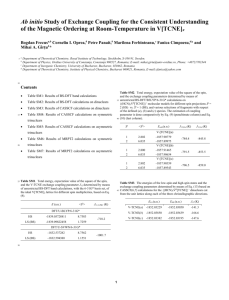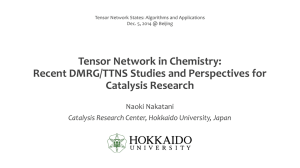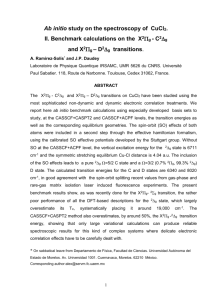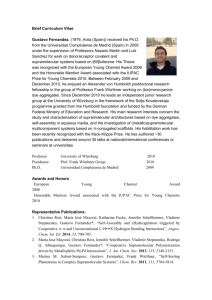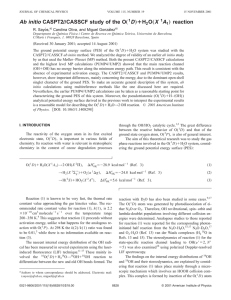Multi-reference Calculations beyond the Limits of CASSCF: The Case of... Complex with a Rare M-O-M Core
advertisement
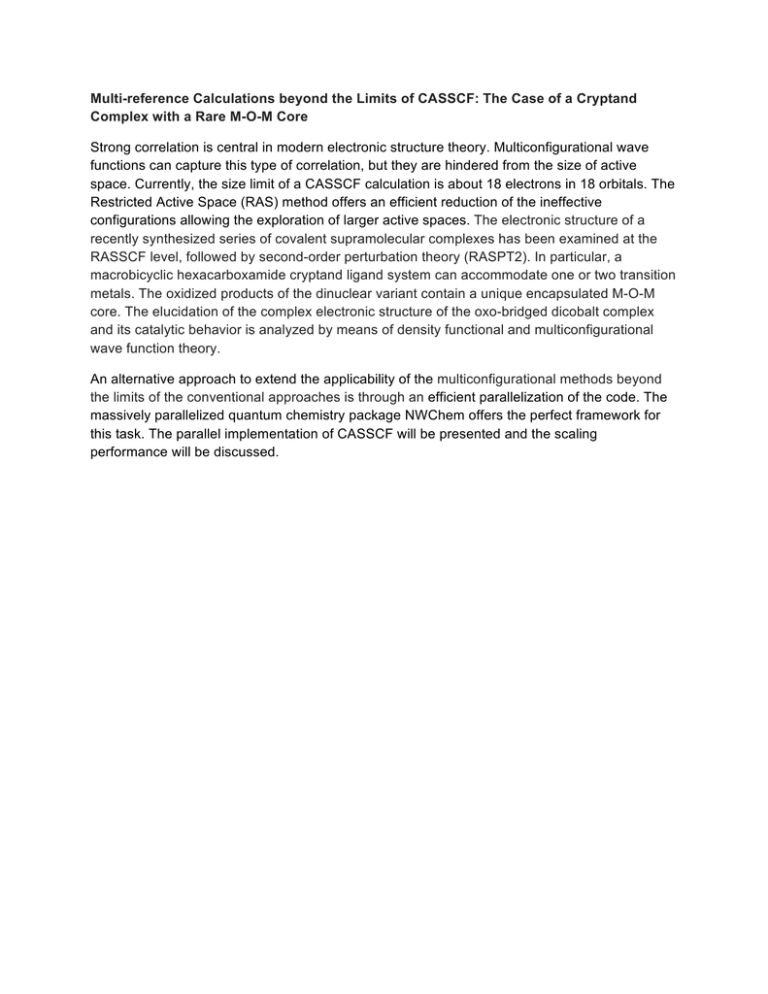
Multi-reference Calculations beyond the Limits of CASSCF: The Case of a Cryptand Complex with a Rare M-O-M Core Strong correlation is central in modern electronic structure theory. Multiconfigurational wave functions can capture this type of correlation, but they are hindered from the size of active space. Currently, the size limit of a CASSCF calculation is about 18 electrons in 18 orbitals. The Restricted Active Space (RAS) method offers an efficient reduction of the ineffective configurations allowing the exploration of larger active spaces. The electronic structure of a recently synthesized series of covalent supramolecular complexes has been examined at the RASSCF level, followed by second-order perturbation theory (RASPT2). In particular, a macrobicyclic hexacarboxamide cryptand ligand system can accommodate one or two transition metals. The oxidized products of the dinuclear variant contain a unique encapsulated M-O-M core. The elucidation of the complex electronic structure of the oxo-bridged dicobalt complex and its catalytic behavior is analyzed by means of density functional and multiconfigurational wave function theory. An alternative approach to extend the applicability of the multiconfigurational methods beyond the limits of the conventional approaches is through an efficient parallelization of the code. The massively parallelized quantum chemistry package NWChem offers the perfect framework for this task. The parallel implementation of CASSCF will be presented and the scaling performance will be discussed.

